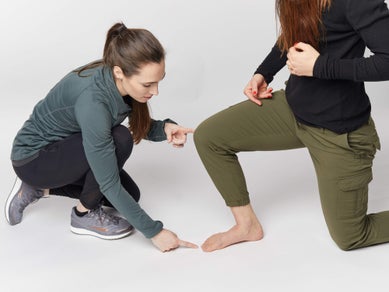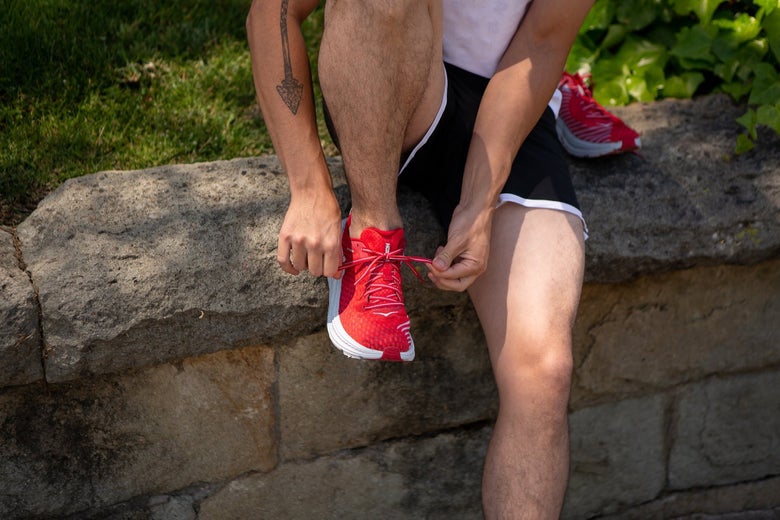Ultimate Runner's Guide to Pronation
Whether you are a beginning runner or a pro, you have probably heard of pronation. The degree to which someone pronates can have a significant effect on their ability to run comfortably, as well as the overall health of their bodies. With this guide, we'll try to provide a deeper understanding of the different levels of pronation and its effects on the body.
.jpg&nw=780&nw=580)
Pronation vs Neutral vs Supination
Pronation is a process that we hear a lot about within the running community. Usually referenced negatively, pronation is actually a perfectly natural process that is critical for helping our bodies absorb the forces of striking the ground. While running or walking, our arches collapse inward when our feet hit the ground, distributing the energy of the impact safely throughout the body. This collapsing of the arch is what we refer to as pronation. Although pronation is necessary for running, it can occur at vastly different levels in each runner, the extremes of which can be problematic.
Runners whose arches barely collapse are referred to as supinators, while those whose arches collapse excessively are called overpronators. If your arch collapses within a normal range, then you are said to be a neutral runner. As you can see by the visual below, the level at which someone pronates has a major influence on how the foot and ankle (left foot in the photo) progress through the gait cycle. Unfortunately, the excessive collapse of the arch (overpronation) can lead to the development of pain and discomfort in other parts of the body: like the ankles, Achilles tendons, shins, outside knee, outer hip, arches, and heel.
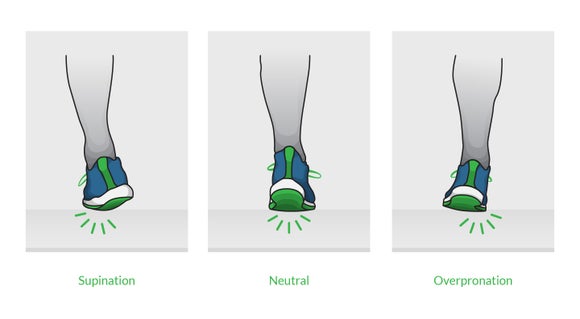

Determining Your Level of Pronation
Understanding your body's unique running mechanics and identifying your foot's level of pronation can be extremely important to your training success, as well as your health. Simple tests such as the Wear Test or the Wet Foot Test are effective ways to get insight into how your foot and ankle move, but the most effective way to diagnose your foot's pronation level is to have a specialist analyse your gait. Running Warehouse Australia offers expert gait analysis from the comfort of your home. All that's required is to follow the link below and submit a short 15-20 second video. A footwear specialist will then analyse your foot and ankle to determine the level at which you pronate. No matter what test you use to evaluate your feet, it is always helpful to grow a deeper knowledge of your body's unique movement patterns. With this information, you can better craft your personal training program and prehab/rehab exercises, as well as purchase the proper equipment (shoes) to accommodate your body's needs and stay healthy throughout all your training.
The Wear Test
The Wear Test is the easiest way to determine your level of pronation. All you will need is a pair of running shoes that you've already run in fairly extensively. Simply look at the bottom of the shoe and see where the most wear is.
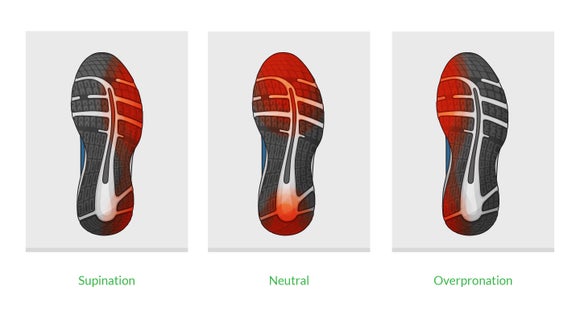
| Overpronate | The shoe shows excessive wear from the ball of the foot, along the inner edge, and toward the big toe |
| Supinate | The shoe is most worn down on the outer, pinky toe side of the foot |
| Neutral | The shoe is most worn down in the centre |
The Wet Foot Test
The Wet Foot Test allows you to determine pronation by looking at your footprint. To do this, wet your foot before steppin onto a piece of cardboard. Then match your footprint to the corresponding level of pronation, as shown in the graphic below.
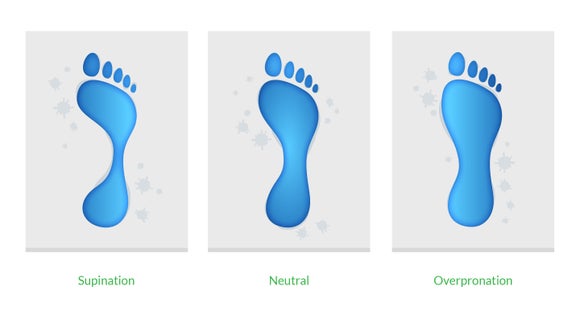

Corrective Exercises for Pronation
Many runners suffer from the effects of overpronation, but there are a lot of things runners can do to help mitigate the discomfort created by this mechanical inefficiency. Targeted muscle activation and mobility exercises can help correct overpronation and reduce the loading forces on the body at ground impact. These exercises can improve the efficiency of your gait and help you feel more comfortable while you run. Hip CARS, Clamshells, Lateral Band Walks, Glute Bridges, Calf/Ankle Raises, and Lunges are all exercises that can help prevent or alleviate pain caused by overpronation. Also, training smaller muscle groups in the foot and performing Short Foot exercises can help strengthen the arch to prevent it from collapsing at excessive levels (overpronating) while running.
The Best Running Shoes for Overpronators
Along with corrective exercises, one of the best ways to avoid the discomforts caused by overpronation is by wearing the correct type of shoes to meet your specific needs. Neutral runners and those who supinate may be comfortable in nearly any kind of shoe, but overpronators can benefit greatly from wearing a shoe with added stability. Stability running shoes contain specific features that prevent the arch and ankle from rolling excessively inward, thus avoiding potential pain and injury. There are numerous types of stability shoes featuring various midsole technologies that offer anywhere from minimal to maximal support. To help guide you to the correct stability shoe for your specific level of pronation, check out our article on Best Stability Shoes.
